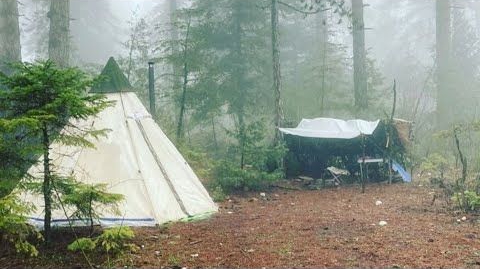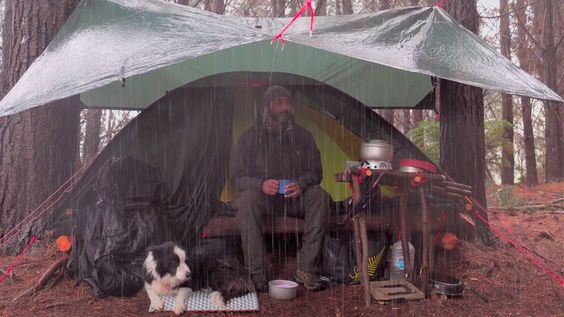- English
- Español
- Português
- русский
- Français
- 日本語
- Deutsch
- tiếng Việt
- Italiano
- Nederlands
- ภาษาไทย
- Polski
- 한국어
- Svenska
- magyar
- Malay
- বাংলা ভাষার
- Dansk
- Suomi
- हिन्दी
- Pilipino
- Türkçe
- Gaeilge
- العربية
- Indonesia
- Norsk
- تمل
- český
- ελληνικά
- український
- Javanese
- فارسی
- தமிழ்
- తెలుగు
- नेपाली
- Burmese
- български
- ລາວ
- Latine
- Қазақша
- Euskal
- Azərbaycan
- Slovenský jazyk
- Македонски
- Lietuvos
- Eesti Keel
- Română
- Slovenski
- मराठी
- Srpski језик
Eight Tips for a Great Rainy Camping Trip
2022-07-29
You prepared all your gear, picked your destination, and finally persuaded your friends to go camping with you. However, the weather forecast tells you it will rain over the weekend. During heavy rains and thunderstorms, we have to reschedule for safety. But if it's a safety issue, don't let the rain ruin your trip.
Remember these 8 tips to make rainy camping pleasure.
1. Be prepared for the details
A big part of keeping your body dry is preventing rainwater from seeping into clothing and gear. Usegaiters or wearcamp pants to keep rain from seeping into your boots. Wear a baseball cap or other outdoor hat to prevent water droplets from penetrating the collar. Bring a few tarps and use them to build a "roof" that provides a nice space to move around while camping.

2. Check and repair your equipment
Before camping in the rain, check the seams on your tent. Check the fabric for perforations and frayed spots, and the cord attachment for neatness. If it is damaged, purchase the corresponding accessories to repair it. If your jacket is old, it's best to wash it because dirt can clog the pores of the waterproof membrane and reduce breathability. If the DWR waterproof coating on the surface is worn, use a spray to re-waterproof.
The same goes for your hiking shoes, even if they have a waterproof, breathable membrane inside, if the DWR waterproof coating on the surface wears off, the leather and fabric of the shoe can absorb moisture, making the shoe heavier and less breathable.
3. Pack Smartly
Your backpack rain cover is only the first line of defense. Pack in a plastic sealable bag to protect the contents from standing water and side showers. It is pre-installed before packing the tent, the wind rope can be tied first, and the outer account can be folded in an easy-to-remove way. This speeds up tent setup and minimizes tent exposure
4. Dress correctly
When hiking outdoors, your clothes get wet from two types of moisture: rain and sweat. Avoid cotton underwear, which is difficult to dry once wet, and opt for quick-drying synthetics or lightweight wool. In areas with little rainfall, you can wear a soft shell. The soft shell maximizes breathability and dissipates sweat.
However, if the temperature is low and the rainfall is heavier, you need a hard shell jacket to resist the wind and rain. There are now jackets using new materials that provide reliable weatherproofing while also providing comfort and breathability.

5. Use correct posture
When hiking, keep your arms down to prevent rain from penetrating your sleeves. Then tighten the chin to let the rain drip off the hat and prevent it from dripping down the neck.
6. Get dressed
It's also a small detail, but over time it can have a big impact. Tuck the hem and cuffs of your bottom layer. Otherwise, your clothes will slowly get wet as it continues to absorb moisture.
7. Choose the right campsite
Find an area with good drainage. Stay away from ravines, depressions, and soft soils, where rainwater can collect. Choose a spot under a tree or on the leeward side of a boulder that will protect you from wind and rain.
8. Set up the tent correctly
When set up your tent, keeping the smallest side (usually the rear end of the tent) facing the wind so you can sleep better at night. Tighten the outer tent with thewind rope. The edge of the outer tent should exceed the bottom of the inner tent.
Finally, if you're setting up your tent on a low terrain, you can place a tarp under the outside of the tent to prevent rain from seeping under the tent.



